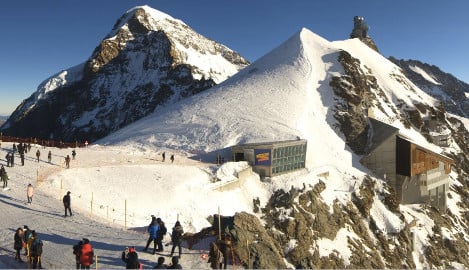WEATHER
Switzerland marks driest December in 150 years
Switzerland has just experienced its driest December in more than 150 years and one of its driest months on record, meteorologists said on Saturday.
Published: 1 January 2017 10:34 CET

A webcam shows the Jungfraujoch peak on New Years Day morning. Photo: Web Cam screen grab.
With an average of just 2.0 millimetres (0.079 inches) of precipitation this month, the Swiss lowlands saw their driest month since record-taking began in 1864, the Federal Office of Meteorology and Climatology, or MeteoSuisse, told public broadcaster RTS.
Many places in the west of the country did not see a single snowflake or drop of rain, it said, pointing out that usually the Swiss plains get nearly 90 millimetres of precipitation on average in December.
Before this year, the driest December on record was in 1963, when the Swiss lowlands saw an average of 4.8 millimetres of precipitation, MeteoSuisse said. The usually wet month of December ticked in this year as the third driest month on record, after September 1865, which saw 1.7 millimetres of rain, and April 1893, which got only 1.1 millimetres.
Meanwhile, many places in the Swiss Alps experienced unusually high temperatures, with the 3,466-metre (11,371-foot) Jungfraujoch peak for instance registering its third-warmest December on record, MeteoSuisse said. See here for a web cam.
The meteorologists did not provide an explanation for the unusually dry and warm weather.
Url copied to clipboard!



 Please whitelist us to continue reading.
Please whitelist us to continue reading.
Member comments